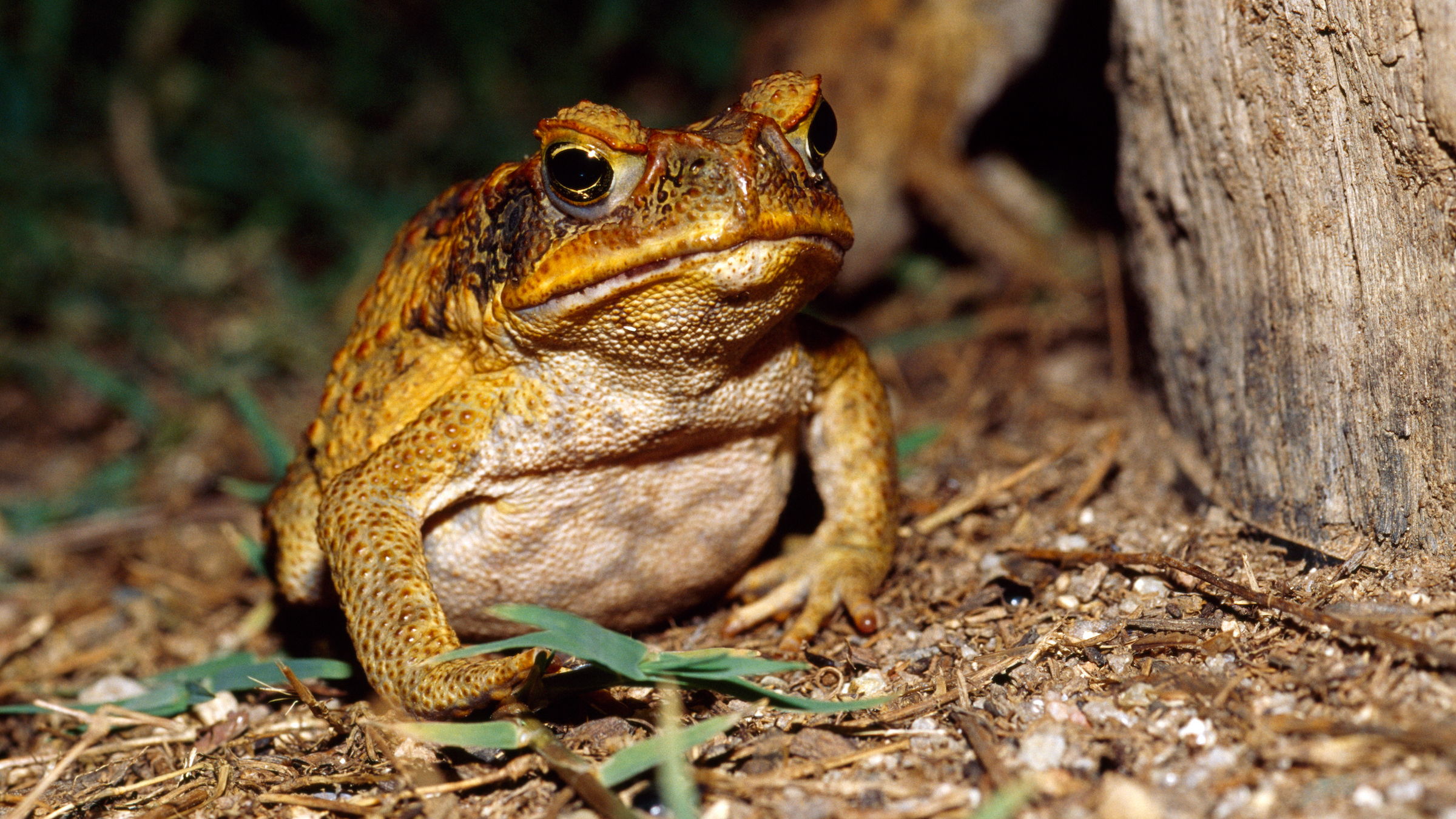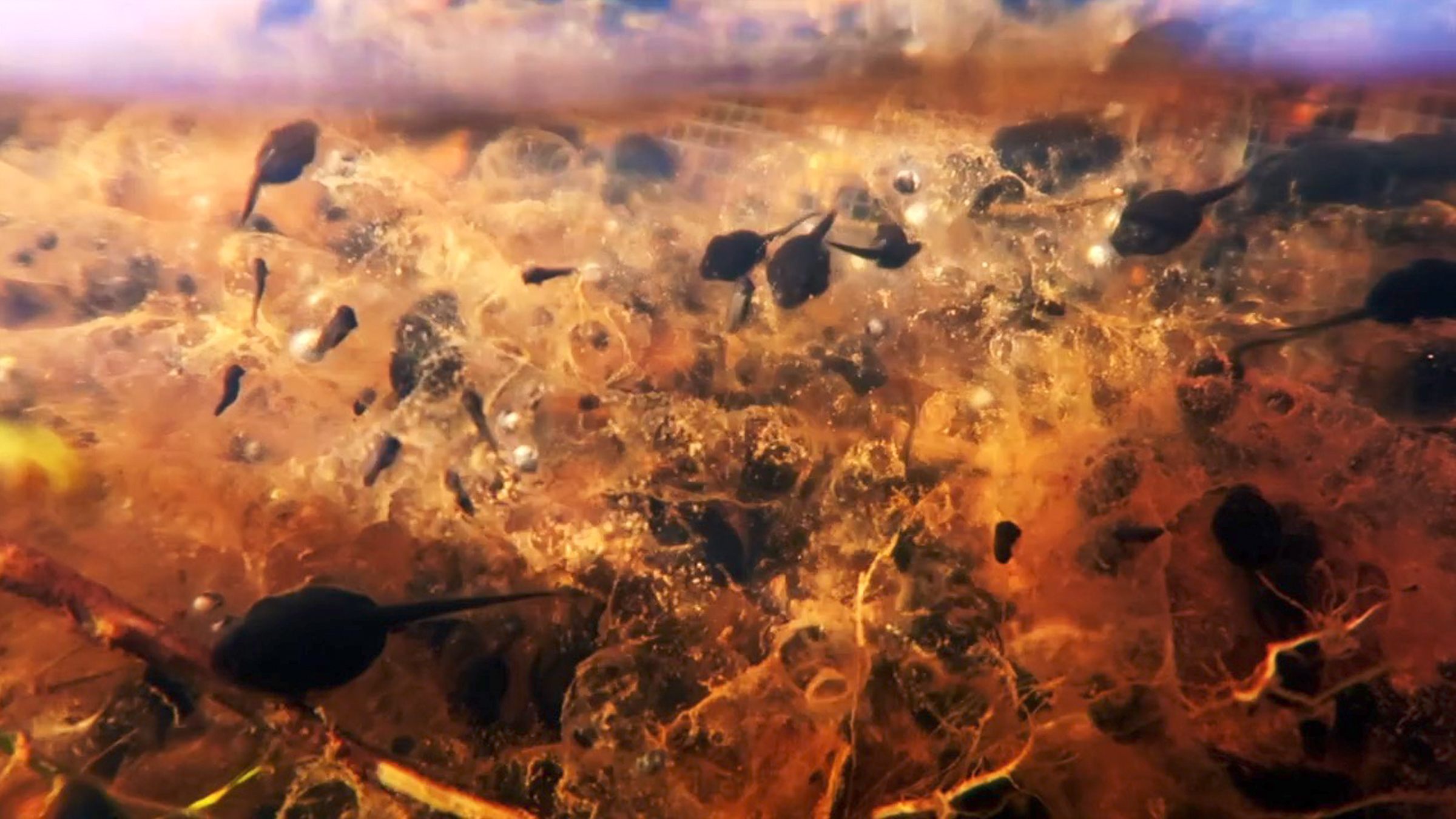Cannibal toads eat so many of their young, they're speeding up evolution
Here's how the young are fighting back.

The hatchlings of the invasive cane toad in Australia don't stand a chance against their deadliest predator: cannibal tadpoles who guzzle the hatchlings like they're at an all-you-can-eat buffet. But now, the hatchlings are fighting back.
They're developing faster, reducing the time that hungry tadpoles have to gobble them up, a new study finds.
"If cannibals are looking for you, the less time you can spend as an egg or hatchling, the better," said study lead researcher Jayna DeVore, who did the research as a postdoctoral research associate at the University of Sydney and is now a biologist for the Tetiaroa Society, a nonprofit conservation organization in French Polynesia.
Developing quickly, however, has its pitfalls. Compared with typically growing hatchlings, those that grew faster fared worse when they reached the tadpole stage of life, the researchers found. So it isn't "worth it to try to defend yourself in this way unless cannibals are definitely coming for you," DeVore told Live Science.
Related: Image gallery: Invasive species
The cane toad (Rhinella marina) is a poster child for invasive species. The warty toxic toad, notorious for gulping down anything that fits into its wide mouth, is native to South America. In the 1930s, farmers in Queensland, Australia, thought the toad would be the perfect predator to gobble up beetles that were destroying sugarcane fields. But with no natural predators Down Under, the toad population ballooned from only 102 individuals to more than 200 million, according to WWF Australia.
Another reason for their population spike is that female toads can lay more than 10,000 eggs at a time in small ponds. "When these eggs first hatch, the young can't swim or eat yet, so they can pretty much only lie there on the bottom of the pond until they develop into tadpoles," DeVore said.
Sign up for the Live Science daily newsletter now
Get the world’s most fascinating discoveries delivered straight to your inbox.
The hungry tadpoles strike during this vulnerable hatchling period. "Once the hatchlings develop into tadpoles, they are too large and mobile for other tadpoles to eat them, so the cannibals have to work quickly if they want to consume them all," DeVore said.
Tadpoles that cannibalize the younger generation are doing themselves a huge favor; they're getting nutrients and eliminating later competition for resources. "When I first saw this behavior in the wild, I was amazed at how voraciously cane toad tadpoles sought out cane toad hatchlings and ate them," DeVore said. To determine whether this behavior was "normal" or whether it was an adaptation to extreme competition among invasive cane toads, DeVore and her colleagues compared Australia's invasive cane toads with the native-range ones, or cane toads from their indigenous regions.

Warty toad arms race
Several experiments revealed that the invasive toads — both the hatchlings and the cannibalistic tadpoles — are evolving at breakneck speed.
In one experiment done more than 500 times with different individuals, DeVore and her colleagues placed one tadpole in a container with 10 hatchlings. Although the native-range tadpoles did engage in some cannibalism, "we found a hatchling was 2.6 times as likely to be cannibalized if that tadpole was from Australia than if it was from the native range," she said.
Moreover, the invasive tadpoles were much more attracted to the hatchlings than the native tadpoles were. In another experiment, the team placed tadpoles in a pool with two traps; one trap held hatchlings, and the other was empty. "In Australia, the cannibalistic tadpoles were attracted to the hatchlings; the odds that an Australian tadpole would enter the trap containing hatchlings were about 30 times those of it entering the empty trap," DeVore said.
Related: Survival of the grossest: 8 disgusting animal behaviors
In contrast, the native-range "tadpoles were not attracted to the hatchlings; they were just as likely to enter the empty trap as the hatchling trap," she said. "This demonstrated that this strong attraction to the vulnerable hatchling stage, which is what helps the cannibalistic tadpoles to detect and locate their victims in Australia, is not present in the native range."
Fighting back
To fight back, invasive hatchlings have evolved an escape strategy. When the researchers compared the time eggs and hatchlings spent developing, they found that the invasive toads developed faster than the native-range ones.
In both groups, "we found that cane toad clutches from Australia developed more quickly; they reached the invulnerable tadpole stage in about four days, whereas native range clutches took about five days," DeVore said.
In addition, the invasive hatchlings had a more "plastic," or flexible response than the natural-range hatchlings when a cannibal tadpole was present; the hatchlings from Australia were "more likely to be able to smell when cannibals are around and actually accelerate their development in response," DeVore noted.
While these strategies helped the hatchlings survive, they paid for it later. The researchers tested 1,190 tadpoles for survival, development, growth and plasticity, and found that those that developed faster as eggs and hatchlings to escape cannibalism fared worse and developed more slowly at the tadpole stage than the native-range tadpoles, the team found.
Could cannibalism lead to extinction?
Could the cane toads eat themselves into extinction? Probably not, DeVore said.
"Australian cane toads may well be their own worst enemy, but I wouldn't expect them to go extinct anytime soon," she said. That's because the cannibals benefit too much from eating their own kind. After gaining nutrients and limiting competition, the cannibalistic tadpoles "transform into toads more quickly and at a larger size," she said. It's even possible that these "successful" toads will more rapidly invade new places in Australia.
"The good news is that cannibalism can control population growth," DeVore said. "So, although cane toads are unlikely to drive themselves extinct, these cannibalistic behaviors may help to regulate their abundance post-invasion."
The study was published in the Aug. 31 issue of the journal Proceedings of the National Academy of Sciences.
Originally published on Live Science.

Laura is the archaeology and Life's Little Mysteries editor at Live Science. She also reports on general science, including paleontology. Her work has appeared in The New York Times, Scholastic, Popular Science and Spectrum, a site on autism research. She has won multiple awards from the Society of Professional Journalists and the Washington Newspaper Publishers Association for her reporting at a weekly newspaper near Seattle. Laura holds a bachelor's degree in English literature and psychology from Washington University in St. Louis and a master's degree in science writing from NYU.










